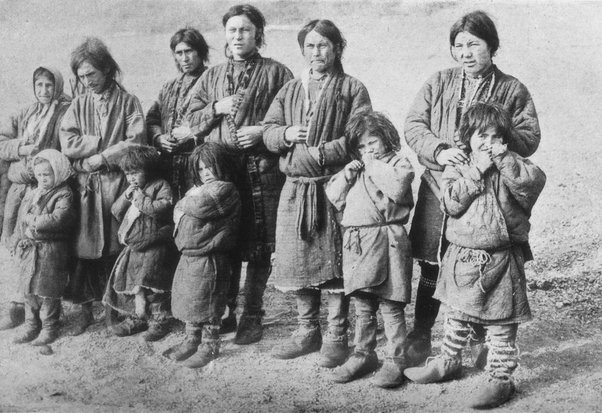
Indigenous peoples of Siberia
–
Knows about human genetics and history
Updated Jan 26
–
Paleo-Siberians, or Indigenous peoples of Siberia, generally refers to the indigenous population of Siberia, prior to the expansion of Neo-Siberians (Turkic, Mongolic, Tungusic from Northeast Asia) and later Russians from Europe, but after the Paleolithic (as Paleolithic Siberians were an even more ancient group, not identical with Paleo-Siberians), with a modern population of about ~4,700,000 (Neo-Siberians included), making up about ~12% of the total Siberian population.
Paleo-Siberian does not refer to a single ethno-linguistic grouping, but, similar to Native American, refers to several related ethno-linguistic groups of largely East Asian-related ancestry.
The Russian colonization of Siberia and conquest of its indigenous peoples has been compared to European colonization in the United States, America generally, and its natives, with similar negative impacts on the natives and the appropriation of their land. However, the Siberian experience was different, as settlement has not resulted in an as dramatic a native depopulation as in the Americas.
Genetic data suggests that Siberia was populated during the Terminal Upper-Paleolithic (36+-1,5ka) period from both, a deeply European-related population, which was once widespread in Northern Eurasia, and from an early East Asian-related group, which migrated northwards into Central Asia and Siberia, merging with this deeply European-related population, and forming the Ancient North Eurasians (ANE). The previously analyzed ANE samples all had East-Eurasian descended paternal lineages and European/Middle Eastern maternal lineages. Autosomal DNA analyses suggest between 21% to 36% East Asian-related ancestry among the ANE samples.
These population dynamics and later constant northwards geneflow of East Asian-related ancestry during the late Paleolithic would later gave rise to the “Ancestral Native Americans” and Paleosiberians, which replaced the ANE as the dominant population of Siberia.
Further northwards geneflow from Northeast Asia resulted in the modern distribution of “Neo-Siberians”.
Paleo-Siberians, represented by Yeniseians:
They are also the closest relatives of Native Americans, and may be linguistically related to the Na-Dené people.
See also:
Alexei Muraki’s answer to Are Yeniseians a mix of Caucasic and Mongolic people?
Thank you for reading! 🙂
–
(For the source of this, and many other equally intriguing and important articles, please visit: https://www.quora.com/profile/Alexei-Muraki/)








